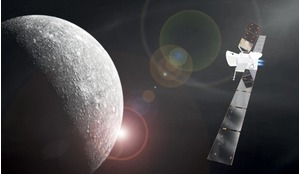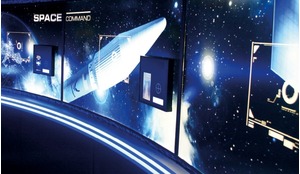The 21st century is the era of digital transformation and satellites are a key part of the mix. The author explains how things need to change to enable the successful integration of satellite, terrestrial and Cloud infrastructure using the concept of virtualisation.
Digital transformation is happening across every industry in every region of the world. Although we are already connected, this is about to become ‘hyperconnectivity’, in a world where 5G and the network of networks connect, monitor and optimise our business operations.
Data and business intelligence platform, Statista, predicts that, by 2027, global spending on digital transformation will reach US $3.9 trillion, up from $2.15 trillion in 2023. Meanwhile, multinational business services company, Accenture, reports that Artificial Intelligence (AI), the Cloud and the Internet of Things are the top three areas in which companies are scaling up. International law firm Baker McKenzie states that a huge 77 percent of companies have already embarked on their digital transformation journey. The field is experiencing an incredible acceleration.
If digital transformation is going to be a success, however, ubiquity of connectivity must be achieved with different access technologies interwoven and interoperable in a seamless manner to provide the most suitable communications access for a given application. We must ensure that seamless connectivity is made available to all, so that users can move between each access technology without noticing.
Satellite technology will form an important part of this transformation as it facilitates ubiquity, bridging gaps in connectivity infrastructure where they exist and ensuring that remote businesses and communities are served.

Satellite: a rebirth
Connectivity must be achieved with different access technologies interwoven and interoperable in a seamless manner
In parallel with the changes that are engulfing industry, the satellite sector is also undergoing the biggest transformation in its history and positioning itself for the future. Previously a technology that stood on its own, satellite is now beginning to integrate itself into the wider telecommunications fabric, bringing its unique capabilities of scale, reach and reliability. No other technology has the capabilities that satellite brings to the table: unbound by terrestrial limitations, it can take connectivity anywhere, no matter how remote. And with 2.6 billion people on the planet still unconnected, this capability is priceless.
Meanwhile, the Cloud is playing an increasingly important part, not only in business, but in our everyday lives. As Cloud adoption increases, and there is a move from traditional analogue to Internet Protocol (IP), satellite will allow access anywhere, bridging gaps where they currently exist in Cloud infrastructure. However, to enable migration to the Cloud, the satellite industry must make fundamental changes and it’s a complex journey that is being embarked upon.
Previously dependent upon physical hardware, the sector must now ‘virtualise’ itself to enter this new Cloud era – in other words, it must move from a dependence on physical hardware to a software-based solution. It must also embrace standards from the telecoms provider (telco) world. This transformation will open up broad avenues of opportunity for satellite service providers, satellite operators, enterprise customers… and everyone in between.
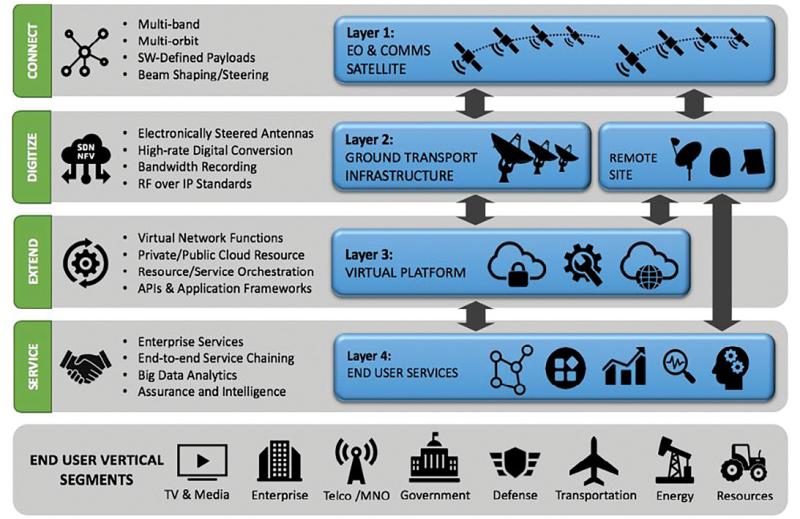 Apossible, high-level framework for architecting a fully virtual satellite ground networkinfrastructure produced by Northern Sky Research.
Apossible, high-level framework for architecting a fully virtual satellite ground networkinfrastructure produced by Northern Sky Research.
Satellite, the Cloud and virtualisation
No other technology has the capabilities that satellite brings to the table: unbound by terrestrial limitations, it can take connectivity to anywhere
Satellite technology has advanced over the last decade, moving with the times to fulfil demanding applications with more powerful satellites. High Throughput Satellite (HTS) platforms have increased bandwidth and performance and lowered price-per-bit. Payloads are now often software-defined, highly flexible and configurable in orbit with steerable and splitable beams. This is coupled with the emergence of multi-orbit constellations - in low, medium and high-altitude orbits - featuring hundreds or even thousands of small satellites.
These changes are allowing satellite to rival terrestrial technology. It’s finally moving into the mainstream, adapting and transforming itself to fit in to today’s advancing world of communications. As we move towards a fully networked world, the satellite industry is starting to embrace the telco world, along with its standards, so that it can integrate much more easily into the wider connectivity landscape.
Today, ordinary citizens are becoming familiar with the Cloud as so much of our data is stored there. The same can be said for industry, with many sectors using it to empower their businesses. The Cloud enables service providers to scale up massive networks on faster timescales with less capital expenditure and more cost-effective scale. It also facilitates a distributed, reliable architecture with access to greater security, proven management tools and streamlined operations. However, without the access technologies to connect to the Cloud, businesses cannot use it. As already implied, satellites offer the solution.
So, what does virtualisation achieve? If the satellite sector is to integrate into the broader telco market, the ground segment will need to match the in-orbit capabilities and become software defined, agile and flexible. To achieve this, it must move away from physical hardware to embrace software which will enable it to serve new users and improve overall operational efficiency.
Converting hardware into software, installed and managed remotely via third-party data centres, will give satellite operators more flexibility over their networks and speed up response times.
This is no small feat. It’s an incredibly complex migration that will involve every aspect of the satellite ecosystem: teleports, gateways, operators, service providers and ground system vendors. Ultimately, it will result in reduced costs and complexity and create opportunities to expand markets.
The satellite sector has been slow to adopt an open architecture but by assuming best practices from the telco and IT worlds it can adapt to the specific needs of the market and move to availability and adoption much more quickly. Creation of a fully digital ground segment also means that it can better integrate with 5G and the network of networks.
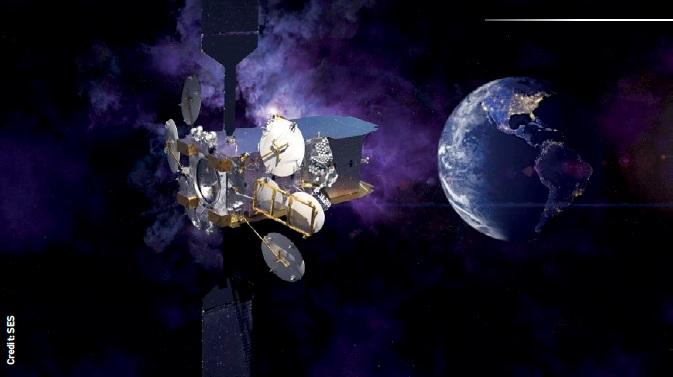 Artist’s impression of the SES-17 High-Throughput Satellite, launched in October 2021. SES-17 delivers a multi-orbit, multi-band offering providing the highest levels of network resiliency and intelligent, application-aware load balancing.
Artist’s impression of the SES-17 High-Throughput Satellite, launched in October 2021. SES-17 delivers a multi-orbit, multi-band offering providing the highest levels of network resiliency and intelligent, application-aware load balancing.
Progress
Previously dependent upon physical hardware, the sector must now ‘virtualise’ itself to enter this new Cloud era
But where are we on this road to virtualisation? According to Paul Isaac, Director RF Products at Kratos Defense and Security Solutions, “We are seeing more ground segment vendors talking about virtualisation and a few vendors have recently announced products going to market. The need for virtualisation is now widely accepted across the industry”.
The term ‘virtualisation’ is a new one for satellite companies, but the realisation that this is something that must be mastered now has permeated quickly in an industry that is having to move rapidly and decisively.
“Two years ago, many did not think it was possible or even a viable approach”, continues Isaac. “Virtualisation has been widely adopted in the Earth observation (EO) market with vast amounts of [orbital] passes being supported using virtualised products from vendors. Virtualisation is also steadily being adopted for satellite communications as well”.
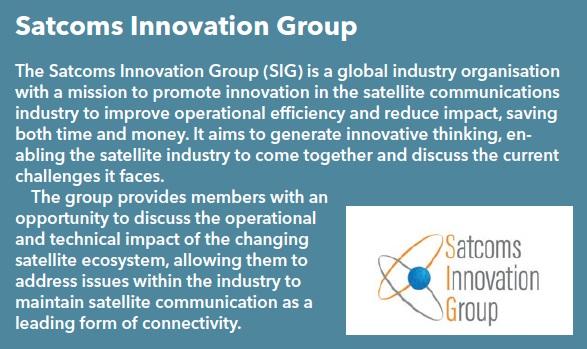 Satcoms Innovation Group
Satcoms Innovation Group
Standards
The satellite sector lags behind the telco sector by around a decade in this regard. The telco industry embraced technical standards such as 3GPP and MEF long ago and it runs on an open architecture. Now it’s the turn of the satellite sector to adopt standards that will enable the functionality of teleport infrastructure to run on private or public Cloud platforms. Cloud Service Providers (CSPs) are preparing to accommodate satellite technology - and standards will be a big enabler in making this happen.
A key facilitator in satcom industry standardisation is the Digital Intermediate Frequency Interoperability (DIFI) Consortium, which was established to develop a standard that will enable the digital transformation of satellite and related industries by providing a simple, open, interoperable digital standard that replaces the natural interoperability of analogue intermediate frequency signals. It also helps to prevent ‘vendor lock-in’, whereby users are forced to continue using a product or service regardless of quality, because changing provider is not practical.
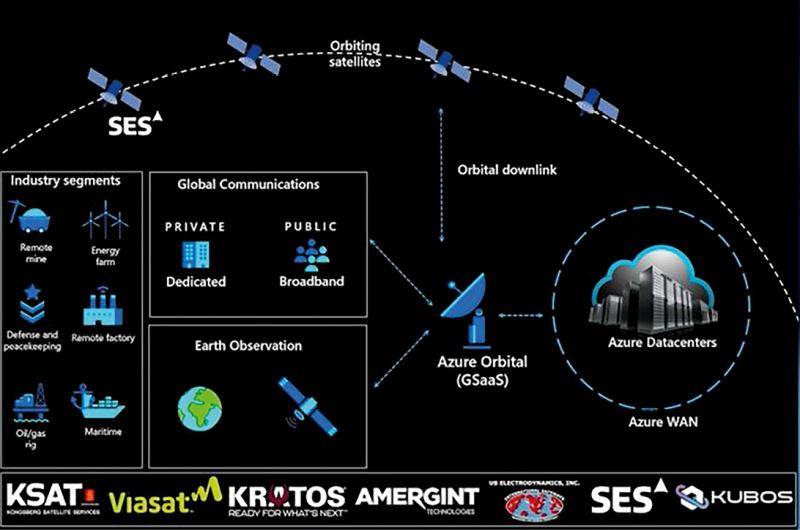 In some parts of the satellite industry the journey to virtualisation has already begun as the Earth observation sector is driven by Ground Station as a Service (GSaaS) providers, such as Microsoft Azure Orbital.
In some parts of the satellite industry the journey to virtualisation has already begun as the Earth observation sector is driven by Ground Station as a Service (GSaaS) providers, such as Microsoft Azure Orbital.
DIFI Members have created a standard that is both open and transparent and membership is growing, as Paul Isaac confirms: “The DIFI Consortium continues to announce new industry partners and members from across the industry and the adoption and interoperability workshops continue to be well supported”.
The term ‘virtualisation’ is a new one for satellite companies, but the realisation that this is something that must be mastered now has permeated quickly
The aim is to keep the standard simple, so that it can be adopted rapidly throughout the industry. The standard must meet a wide range of needs but must also be cost-effective and uncomplicated to implement. It must also develop with the industry as it evolves and support advancements in orbit.
“At Kratos we believe that DIFI is the on-ramp to virtualisation”, adds Isaac. “It is the key to having an open standard that allows the breadth of the industry to contribute to the adoption of a digital ground-enabling virtualisation. Without it the satellite industry would continue to experience vendor lock-in and lose the ability to tap into the wider telecommunications market which requires standards-based approaches.”
By adopting the DIFI standard, the management of teleports will be simplified. Standardisation will result in flexible delivery over IP connectivity, simplified maintenance and the use of commercial off-the-shelf (COTS) hardware which will result in lower costs.
Collaboration
Another very active member of DIFI is ETL Systems, a UK-based company that played a key role in the PlugFest event of June 2024, which emphasised the truly global nature of specification and the mix of companies producing DIFI-compatible products.
PlugFest gives participants the opportunity to test their equipment for interoperability with that of other members. As the path to virtualisation continues to gather pace, radio frequency/intermediate frequency converters are becoming available from multiple vendors, supporting software modems and software instrumentation.
“The number of companies bringing equipment to the PlugFest truly shows the selfless cooperation between companies to ensure the success of the new standard,” says Simon Swift, Engineering Director - Digital Technologies at ETL. “The DIFI standard is being widely adopted amongst the industry and DIFI membership continues to grow”.
Satellite has long been viewed as a niche technology, but this is its chance to break out and assert itself as a critical part of the connectivity landscape
Swift does, however, remind us that the path to virtualisation will not happen overnight.
“It is important to remember that this is not a ‘cliff edge’. The journey to virtualisation will see a steady migration of equipment, with legacy and digital equipment coexisting for at least the next five years”, he concludes.
Though the standard has been established and will change with the needs of the industry, it will take an effort from all ground segment players to come together to make it happen, because ultimately the market needs to drive its adoption.
In some parts of the industry, this is already happening, Paul Isaac explains, as the EO sector is driven by Ground Station as a Service (GSaaS) providers, such as Microsoft Azure Orbital, AWS, the Swedish Space Corporation (SSC) and KSAT.
Satellite operators that want to capture more of the telecommunications market or create unique offerings to compete with emerging low Earth orbit (LEO) operators are looking to more fully utilise their existing capacity. Platforms must now be dynamic, embrace open standards and support software defined satellites, multi-orbit and terrestrial networks.
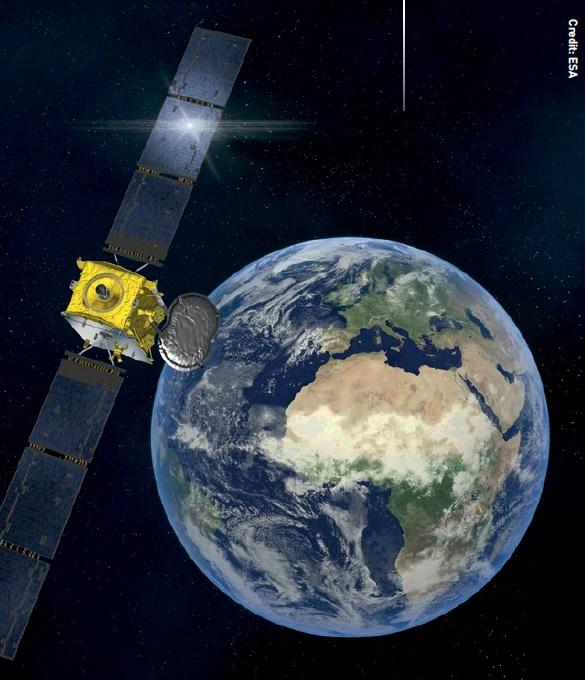 Software-defined satellite. Artist’s impression of Eutelsat Quantum, Europe’s first commercial satellite capable of being completely reprogrammed while in space, which started commercial operations in July 2022.
Software-defined satellite. Artist’s impression of Eutelsat Quantum, Europe’s first commercial satellite capable of being completely reprogrammed while in space, which started commercial operations in July 2022.
Satellite is critical
The transformation that is underway across the satellite sector will secure its place in the future of connectivity. Satellite has long been viewed as a niche technology, but this is its chance to break out and assert itself as a critical part of the connectivity landscape. If ubiquity is to be achieved, it is satellite that will enable it. United with other access technologies, it will be the critical piece of the communications puzzle that will enable access to services anywhere - on land, sea or air and in the most remote reaches of the planet.
Virtualisation and standardisation are the bedrocks of this transformation and, once properly established, will open up endless potential to enable a plethora of use cases. But it will require effort from the industry itself to ensure that this journey reaches its endpoint. It is going to be a team effort, involving close collaboration and information sharing from all parts of the ecosystem. At Satcoms Innovation Group (SIG), we are dedicated to providing a forum where ideas and experiences can be shared, challenges worked through and innovation discussed so that the journey to a virtualised ground segment is as smooth as possible.
About the author
Helen Weedon has been Managing Director of Satcoms Innovation Group (SIG) since January 2020. She also runs a Wales-based PR agency focusing on media and entertainment technology, covering broadcast industry, telecommunications, satellite and consumer electronics.









